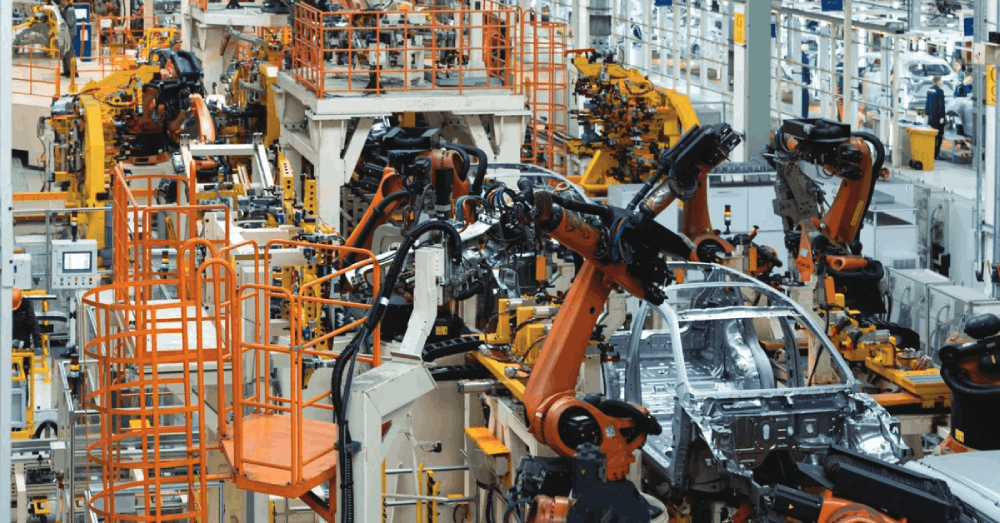Ensuring Seamless Production

Preventative maintenance is the cornerstone of efficient and cost-effective industrial operations. By prioritizing the proactive care of equipment through scheduled inspections and the incorporation of prescriptive methods such as thermography, organizations can significantly reduce downtime, extend the life of machinery, and optimize overall productivity, all while ensuring workplace safety.
In the fast-paced world of industrial operations, maintaining the efficiency and reliability of machinery is crucial for seamless production, asset availability, and operational continuity. Preventative maintenance is a strategic approach that plays a pivotal role in ensuring the longevity and optimal performance of equipment.
Given the complexities and demands of modern industrial environments, it is crucial to grasp the importance of preventative maintenance, explore its impact on operations, the role of advanced technologies, and the benefits of adopting a proactive maintenance approach.
Overview of preventative maintenance
Preventative maintenance involves scheduled inspections, tasks, and repairs aimed at preventing equipment failure before it occurs. Unlike reactive maintenance, which addresses issues after they have already disrupted operations, preventative maintenance takes a proactive stance to identify and address potential problems beforehand. This systematic approach is essential for minimizing unexpected downtime, extending the lifespan of machinery, optimizing overall operational efficiency, and keeping employees safe. Simply put, as organizations focus on the consequence of failure, actions can be taken to ensure alignment with preventing or mitigating those consequences.
Impact of equipment downtime on operations and costs
Downtime in industrial settings can have far-reaching consequences. Every minute of equipment failure translates into lost productivity, missed deadlines, and increased costs. Unplanned downtime not only disrupts the immediate production process but also has a domino effect on downstream operations. The financial impact, in many cases, can be significant when considering the costs associated with emergency repairs, replacement parts, and the potential loss of customer trust. Preventative maintenance acts as a safeguard against these disruptions, helping organizations avoid the detrimental effects of unexpected equipment failures.
Role of Thermography and electrical inspections in preventative Maintenance
With the changes to NFPA 70B in 2023, shifting from a recommended to a required activity, thermography has become a requirement every 6 months. Beyond being a requirement, the value that thermography brings to an electrical maintenance program should be recognized as a critical component of an effective Electrical Preventative Maintenance program.
To enhance the effectiveness of preventative maintenance, industrial facilities are increasingly turning to advanced technologies such as thermography. The use of thermography enables maintenance teams to identify potential issues in electrical systems and machinery components that may not be visible through traditional methods. By using infrared thermography, anomalies in temperature can be detected, indicating potential faults or inefficiencies. Electrical inspections help pinpoint issues like loose connections or overloaded circuits, allowing for timely intervention before a breakdown occurs.
Benefits of a proactive maintenance approach
Adopting a proactive maintenance approach brings a multitude of benefits to industrial operations including:
- At its core, it helps extend the lifespan of equipment, reducing the frequency of breakdowns, and minimizing the need for costly emergency repairs.
- By identifying and addressing potential issues early on, organizations can plan maintenance activities during scheduled downtimes, avoiding disruptions to regular production schedules.
- Lastly, and more importantly, this approach also enhances workplace safety by preventing accidents that may result from equipment failures.
In conclusion, preventative maintenance is the cornerstone of efficient and cost-effective industrial operations. By prioritizing the proactive care of equipment through scheduled inspections and the incorporation of prescriptive methods such as thermography, organizations can significantly reduce downtime, extend the life of machinery, and optimize overall productivity, all while ensuring workplace safety. Embracing a preventative maintenance culture in one’s organization is not just a strategic choice but a necessary one for those seeking to ensure reliability and safety.
| The use of thermography enables maintenance teams to identify potential issues in electrical systems and machinery components that may not be visible through traditional methods. By using infrared thermography, anomalies in temperature can be detected, indicating potential faults or inefficiencies. |
Source: Teledyne FLIR, LLC





 Facebook
Facebook.png) Twitter
Twitter Linkedin
Linkedin Subscribe
Subscribe